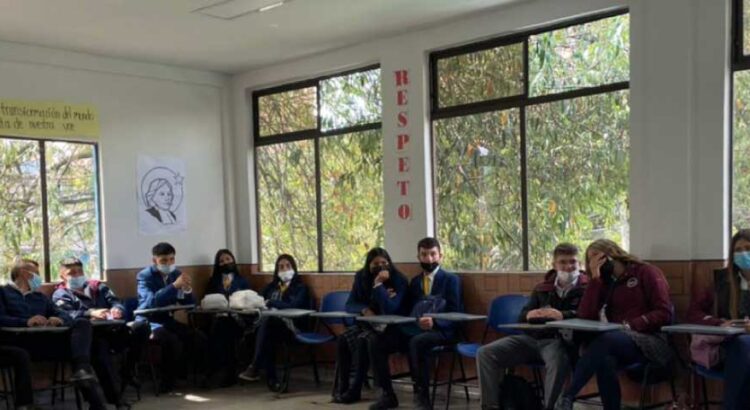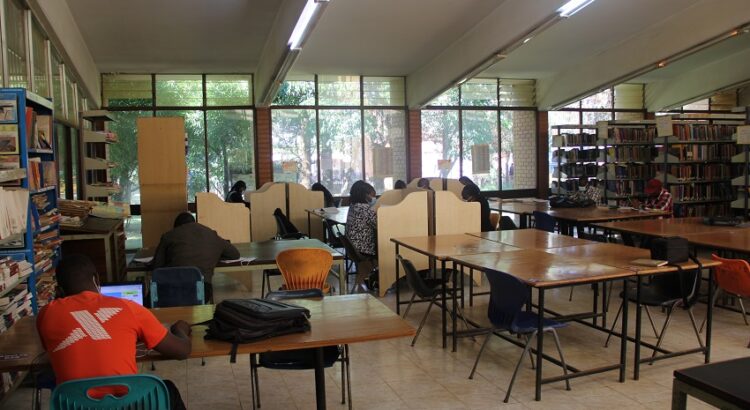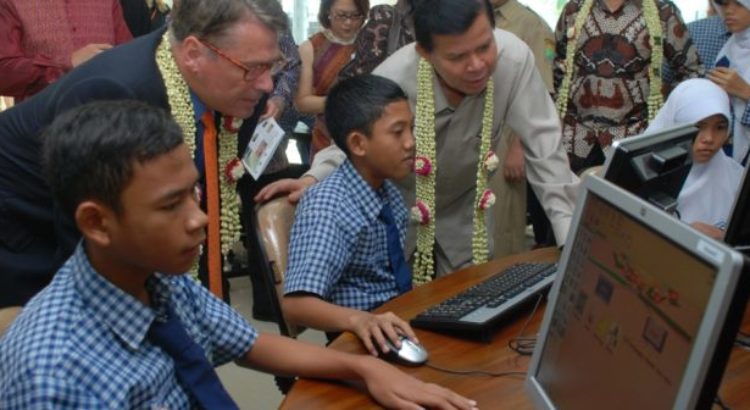By Daniel April and Anna Cristina D’Addio, GEM Report
Today, on October 5th, we celebrate World Teachers’ Day, a special occasion dedicated to celebrating and honouring the contributions of teachers in our society. It also serves as an opportunity to advocate for better working conditions, training and professional development for teachers.
Teachers are crucial for the successful integration of technology in education as the 2023 Global Education Monitoring Report, Technology in education: A tool on whose terms?, emphasized. Keeping teachers and students at the forefront of education technology is a must but within a student-centred approach. Digital tools should enhance, not replace, the essential teacher-student interaction for better learning outcomes.
Technology is transforming teaching worldwide and could, when mastered, equip teachers with tools to focus on student needs, providing access to various resources and encouraging meaningful interactions in the classroom.
For example, teachers can use technology to support personalized learning with adaptive platforms, flexible schedules, and exciting virtual experiences such as augmented reality. Tech-savvy teachers can also use different communication platforms to build strong connections with students and parents, which has been vital during the COVID-19 pandemic. In 2022, the REDS International Survey revealed that more than two thirds of teachers in the United Arab Emirates and Uzbekistan, and more than half of those in Burkina Faso and Ethiopia increased parent communication during the pandemic, relying more on technology.
But technology adoption by teachers is not straightforward. First, inadequate digital infrastructure is a major issue. During the pandemic, only two in five teachers used their personal devices in 165 countries. One-third of schools had only one device for educational use, causing significant disruptions in the learning process. Teachers with disabilities worldwide also face technological challenges. In Ethiopia, the absence of assistive technologies such as screen readers, magnifiers, e-books, and word prediction programmes is a significant barrier to their full participation. In fact, some teachers may not even be aware of the existence of certain assistive technologies.
To take advantage of technology in education, teachers must be prepared to use it. Some educators also lack the necessary training to harness digital tools effectively. The 2018 TALIS shed light on this, indicating that only 43% of lower secondary school teachers felt adequately prepared to use technology for teaching after training, and 78% of teachers lacked confidence in employing technology for assessments. Many countries also face a shortage of science and mathematics teachers because few enter the profession and even fewer stay. In the United States, there were over 30,000 vacancies for physics teachers in 2019. Policies to encourage recruitment, training and retention of teachers in these subjects include bonuses upon signing, salary supplements and the targeting of graduates or professionals who currently have a non teaching career.
Countries are taking steps to help teachers acquire the necessary skills in technology
An analysis of the 211 GEM Report’s PEER country profiles on technology in education suggests that more than half of the countries in four different regions have included ICT standards for teachers in their policies, guidelines, training plans, development strategies, or similar efforts. However, this happens much more often in wealthier countries (62%) compared to less affluent ones (33%) (Figure 1). One in 4 countries globally have laws ensuring training for teachers in education technology, whether during their initial training or later on. Notably, 84% of these systems have strategies for ongoing professional development, while 72% focus on technology in pre-service education. Moreover, by 2022, more than 80% of low- and middle-income countries had introduced digital skills training for teachers from primary to upper secondary education. Although the percentage was lower for pre-primary teachers, it increased from 48% in 2020/21 to 62% in 2021/22.
Teachers are also increasingly taking it into their own hands to enhance their skills and foster collaboration
In the Caribbean, over 80% of surveyed teachers are part of professional WhatsApp groups. Among them, 44% use instant messaging weekly for collaboration. This virtual network enhances in-person collaboration and is now an integral part of teachers’ lives. In Flanders, Belgium, KlasCement, originally a non-profit initiative which is now under the Ministry of Education, has become a hub for teachers, providing a platform for discussions on distance learning. At the start of the pandemic, over 22,000 teachers joined this platform, sharing more than 500 learning resources and initiating over 50 discussions weekly.
On this World Teacher’s Day, let’s thank once again the teachers worldwide for their invaluable contributions and celebrate the strides made to empower teachers to use technology effectively in their classrooms. Increasing their active participation in shaping policies would be crucial to further enhance their impact. This not only brings valuable insights but also fosters a critical attitude toward technology. Together, let’s stand with our teachers, equipping them with the skills and confidence required to thrive in today’s ever-evolving education landscape.
The post Advancing education with technology: Honouring teachers on their day appeared first on World Education Blog.




















 Users Today : 190
Users Today : 190 Total Users : 35459785
Total Users : 35459785 Views Today : 350
Views Today : 350 Total views : 3418322
Total views : 3418322